Unbeknownst to many, CZ-USA has been somewhat quietly rolling out a line of suppressors designed to compliment their rifles and subguns (and yours, too). Earlier this spring I was invited to join a West Texas hunt — for what, I didn’t know — to get some trigger time behind the new suppressor line, and jumped at the opportunity.
After my first hunt in Texas I picked up a pair of hot weather Snake Country boots from LaCrosse. Granted that first hunt was in full-on brush country, but that’s far from the only part of Texas where everything sticks, stings, or bites.
Six-foot rattlesnakes aside, I don’t love fresh gouges in my cowboy boots any more than I like taking cactus quills through the sides of my Salewas.
Though I admit to wearing the Snake Countrys more times while mowing the lawn — plus beating my co-workers at ax throwing — than trekking the Texas countryside, having walked dozens of miles in them in rough country, I can confidently state that they’re exactly what the doctor ordered.
What were we talking about again? Oh, yes, CZ suppressors.
Whether it’s rimfire — both integral and as a separate unit — 5.56, .30 cal, or 9mm, CZ has an app for that.
The designs are unique, too.
Somewhere in the oil fields between Midland and Odessa, we popped into a ranch house and borrowed the owner’s portable x-ray system. This DeWalt-powered, handheld device is intended for x-raying oil equipment — welds, mostly — for inspection purposes.
The computer software is incredibly capable, able to shift focal depth through the component being x-rayed and change contrast and effective x-ray power level. Super impressive stuff for preventing failures that could cost tens of millions of dollars or even lives, or . . .
For x-raying suppressors and guns and stuff.
As you may have already noticed above, CZ’s centerfire cans are of the “reflex” style, meaning they go back over the barrel. This provides additional expansion chamber area without increasing the length of the suppressor beyond the muzzle.
In the photo above, the barrel slides in through the center tube seen on the right side of the screen and threads in at the thick white area at the left end of that internal tube.
Now, I know what you’re thinking. “But Jeremy, all my guns have bull barrels” or “but my front sight’s in the way” and you’re worried the reflex portion may not fit over your barrel. Indeed, it can happen.
Thankfully CZ’s 5.56 and .30 cal cans are modular. The reflex portion can be removed completely and replaced with a direct-thread end cap. This reduces the weight, eliminates any sort of barrel diameter restriction, and, yes, lessens the sound reduction provided by the suppressor.
CZ-USA says, depending on the host gun, that the reflex section is good for 4 to 6 dB of additional volume level reduction. Which is pretty impressive.
It wouldn’t fit over the thick barrel of my Pork Sword Pistol, and I think all of us were shocked to find it comfortable to the ears even in shorty mode, even on this 10-inch .308 firing full-power hunting loads. And thanks to the titanium build of the CZ 7.62 Ti Reflex, it weighs a ridiculously light 8.7 ounces in this configuration (11.4 oz with the reflex section added, which is still absurdly light for a .30-caliber suppressor).
Mounted on a CZ 527 Varmint Suppressor-Ready (Mini-Mauser style action) chambered in 6.5 Grendel with the reflex portion in play, it was extremely quiet. Even with the long barrel length, adding only 11.4 ounces to the muzzle didn’t mess with the handling of the gun as suppressors two to three times this weight may.
This accurate, flat-shooting, quiet, and highly-effective combination confidently took axis deer. (I threw a personally-owned suppressor from another company on my gun as it was sighted in with that, plus there was only one 7.62 Ti Reflex, and I wanted it handy in case we split up to hunt, etc.)
It took coyotes and rabbits out to at least 250 yards if not farther.
We also threw the 7.62 Ti Reflex on CZ’s 527 American Synthetic Suppressor-Ready in 300 Blackout, which is a hell of a fun gun to shoot. The Mini-Mauser style actions are fantastic, and if you haven’t fired 300 BLK through a bolt-action gun, you really have to give it a shot.
In fact, whether bolt action or semi-auto, this is a fantastic suppressor choice for a 300 Blackout. Not only is it extremely quiet and ridiculously lightweight, but it’s modular for length and it’s rated for heavy duty use.
Likewise, CZ-USA’s 5.56 Ti Reflex is just as happy to run on your MSR as it is your long range precision .224 Valkyrie.
It’s actually the exact same suppressor, as far as I can tell from the stats on it, but with a tighter bore for the smaller diameter projectiles. It tamed the sharp crack of a 5.56 as well as a can can, but it’s sure a far cry from shooting a subsonic 300 BLK bolt gun.
My opinion is that dedicated 5.56 suppressors are cool and are nice to have, but I wouldn’t consider one until I had already purchased a .30 cal can, a pistol can (.45 bore, most likely), and a rimfire can. Most .30 caliber suppressors still sound pretty darn good on a .223, and if I were me I’d buy a CZ 7.62 Ti Reflex and use it on every centerfire caliber that fits through the bore.
The story is relatively similar with the CZ S2 SS Reflex or CZ S2 Ti Reflex. Designed around law enforcement use of the Scorpion EVO 3 S2 Micro (including on the select-fire variants), the S2 Reflex is a fully-welded 9mm can intended for high rates of fire and heavy use.
It’s also a reflex suppressor, sliding over the barrel for a few inches behind the shoulder. It offers significant internal airspace despite adding just 5.83 inches to the effective barrel length.
While CZ-USA’s centerfire rifle suppressors are only available in titanium flavor, the S2 comes in 17-4 stainless steel as well. This makes it much more affordable ($599 vs. $929) for folks looking for a dedicated “subgun,” “large format pistol,” or pistol caliber carbine (PCC) suppressor. Though it does come with a weight penalty, tipping the scales at 15.36 ounces versus the Ti’s featherweight 9.6 ounces.
Unfortunately the reflex portion on the S2 was just too long to fit on my threaded M1895 Nagant revolver. If that cylinder rod was maybe an eighth of an inch farther back it would have worked. Dangit.
But what it does do is work really well on a short-barreled 9mm like the Scorpion Micro! I dumped a bag full of magazines through an S2 Micro as fast as I could — bump firing a bunch — missing rabbits the entire time (I had slapped on my Primary Arms TA44 ACOG with ACSS reticle, but it was about 5 feet off from being zeroed for the Scorp) but scaring them something fierce. The shots with subsonic ammo were so darn quiet they wouldn’t spook a rabbit, though the impact of any bullets that made it close sure did the trick.
We spent the entire night, literally dusk till dawn, on top of a pickup truck in rotating computer gaming chairs with integrated rifle rests calling in coyotes, rabbits, and other predators and varmints with Brooks from Salmon River Lodge Resort running the show. Brooks spends like half of his time operating the resort in Idaho and the other half guiding hunts around Texas. He got us on the axis deer immediately the first night and up to our elbows in rabbits and coyotes the second.
Being in oil country, it was an awesome and unique experience to be outside, under a heavy blanket of bright stars, spotlighting predators and varmints while seeing and hearing huge gas flares in the distance.
The next morning we did some plinking with CZ’s rimfire offerings. Above is the Rimfire Integral, an integrally-suppressed barrel for their 455 and 457 rifles.
This suppressor starts life as CZ’s cold hammer forged heavy-profile varmint barrel. The bore of the suppressor “tube” is then drilled out of the front of the barrel and it’s internally threaded. Individual baffles, complete with teeth to cut the carbon out of the threads, are then screwed into place. The end user can even tinker with the baffle depth and spacing, which is cool.
The end result is a CZ 455 or 457 that simply looks like a standard varmint or target gun. Only the end cap gives away that it’s integrally suppressed.
Well, that and it’s ridiculously quiet. Dry firing the gun on an empty chamber is literally louder at the shooter’s ears than firing a subsonic round is. If you think that’s impossible, it’s because the firing pin bottoming out — steel on steel — is louder than the firing pin hitting the soft brass. The gunshot itself? As close to silent as it gets.
And these CZs are extremely accurate, really well-made guns. See TTAG’s full review here.
If a stand-alone rimfire suppressor is more your jam, the CZ Rimfire can is now at hand. While it is pretty dang long by rimfire suppressor standards at 6.9 inches, it’s also incredibly lightweight at just 2.5 ounces. This makes it one of the lightest rimfire cans on the market.
At a skinny 0.866 inches in diameter, the CZ Rimfire blends nicely — often exactly — with many varmint profile barrels available from CZ and other companies. It’s rated for any rimfire round under 0.224″ in diameter, including .22 LR, .17 HMR, .22 WMR, .17 WSM, and more.
Inside the Rimfire you’ll find exactly the same baffle system as inside the Rimfire Integral, with the same ability for the end user to adjust baffle depth and spacing and to remove the baffles for cleaning. The Rimfire is an all-aluminum, hardcoat anodized can.
After all was said and done, I gravitated hard to the suppressed 527 in 6.5 Grendel. Classy in a wood stock with a really great set trigger (push it forward until it clicks for an extremely lightweight and crisp trigger break when you pull it), it was also accurate and flat-shooting. Despite having very little bark or recoil for the shooter, the polymer-tipped Hornady ammo was a solid performer on deer and devastating on coyotes and rabbits.
That’s an entrance wound in exactly the spot it was intended to appear. This deer dropped instantaneously at 195 yards from me and didn’t so much as twitch.
I’d also just like to say right here, for the record, that if you aren’t hunting suppressed you’re doing it wrong. Not only is shooting suppressed so much more pleasant, plus there’s the obvious benefit of being hearing-safe — moving your ear protection to the rifle instead of wearing it on your head, something hunters are horrible at doing reliably — it’s also more effective.
Yes, that’s right, you’ll be a better, more effective hunter if you hunt suppressed. Two reasons:
One, the suppressed gunshot often doesn’t spook the animal(s) and, even if it does, they typically cannot determine the direction from which the shot came and may stay still in confusion or run in a beneficial (to you) direction. This is great for taking multiple shots on a passel of wild hogs, for instance.
Two, you know immediately if you made a good hit. Instead of that loud boom followed by scrambling to get back on target with your optic to see what happened, you hear a suppressed crack then a loud THWACK as your bullet impacts the animal. It’s unmistakable and, thanks to not wearing ear protection as well as to the reduced volume and echo of the gunshot, you can hear it clearly. If you missed, you’ll know it while the rifle is still recoiling. If you hit solidly, you’ll know that, too.
Axis deer is often rated as the best tasting wild game meat anywhere, and I find that easy to believe. Cooked medium rare it’s so close to tasting like grass fed, maybe slightly aged steak that if you didn’t know, you wouldn’t know. The wife and kids (and I) loved it.
Certainly better than the poor snack choices I made for a night awake under the stars on top of a pickup listening to the sound of every sort of small animal being tortured to death blasted over loudspeakers.
Nice knives were made dirty.
Rams sat shotgun.
Awesome t-shirts were spotted.
And random stuff got x-rayed.
There was even some BBQ.
Overall the trip was a great success! I’m hoping to do an axis hunt approximately quarterly. They’re considered a pest species here in Texas (having been imported from India and then pushing out native species due to their heartiness and year-round breeding) so no tags are required and no restrictions exist, making hunting them as easy as can be. At least for Texas, which is almost entirely private property. For that reason Brooks is on my speed dial since he has access to ranches around the state, plus he keeps tabs on where the animals are.
On the CZ suppressor side, I’m very impressed. Their performance is spectacular and the light weight on the Ti models and Rimfire model is insane. Plus the reflex modularity is really cool.
I’ve heard conflicting opinions as to whether a reflex section is effective or not, but at least with these cans I can say without a doubt whatsoever that it is. Being able to remove that module and re-install it made a direct comparison possible, and the difference was clear. While the suppressors were hearing-safe without the reflex module, the additional sound suppression with it was apparent.
I also like how CZ has gone for niches in the market without a lot of alternatives, rather than making suppressors just like everything else out there. For instance, the centerfire rifle cans employ that reflex design and are geared towards the precision and hunting markets. The S2 Reflex is a subgun-specific can — it won’t work on a typical handgun — of which not many competitive products exist. Perhaps none that are also reflex designs. And their Rimfire suppressor is skinnier and longer than the usual option, designed to blend in with a varmint profile barrel.
All of CZ’s new suppressors performed at the top of the class. They’re lightweight and very well made. If their niche is your niche, I highly recommend them. Hopefully we’ll see them at Silencer Shop sometime soon (as we all know they make the suppressor purchasing process easier than anyone), but until then contact CZ-USA to find a dealer or distributor near you.


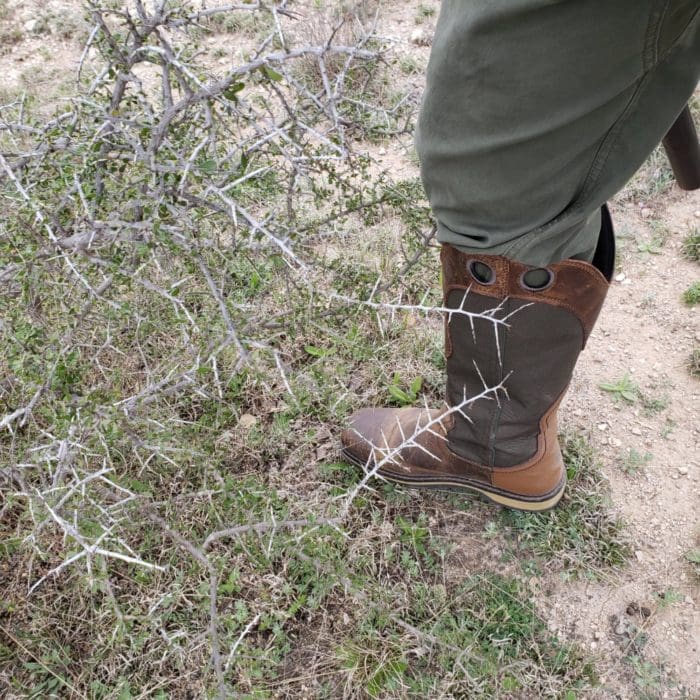
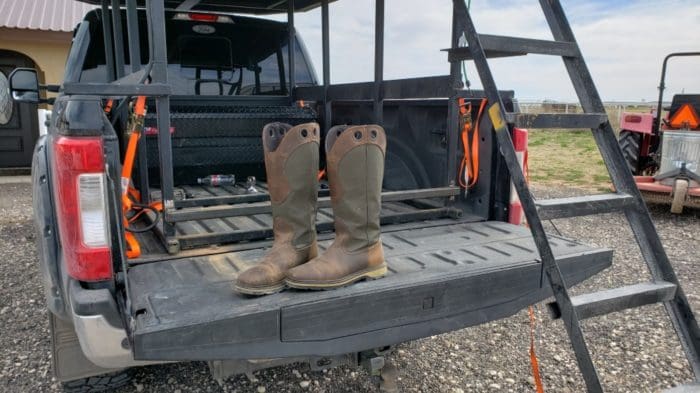
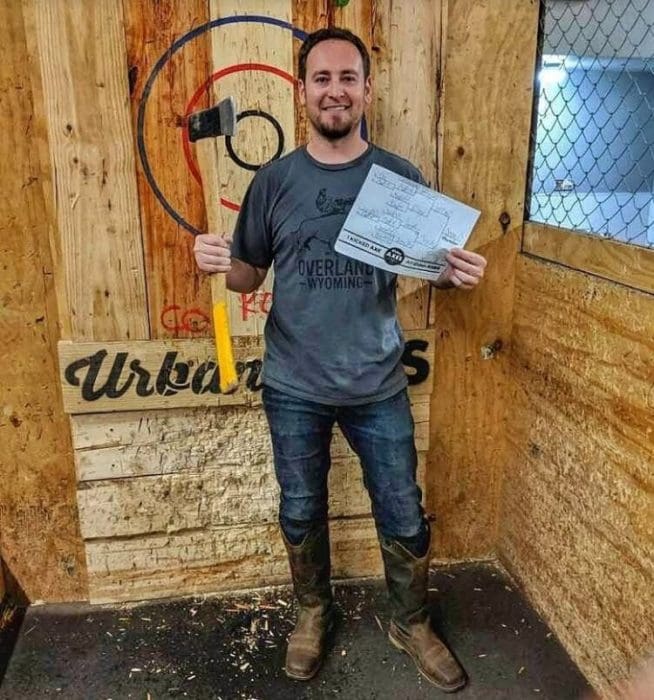


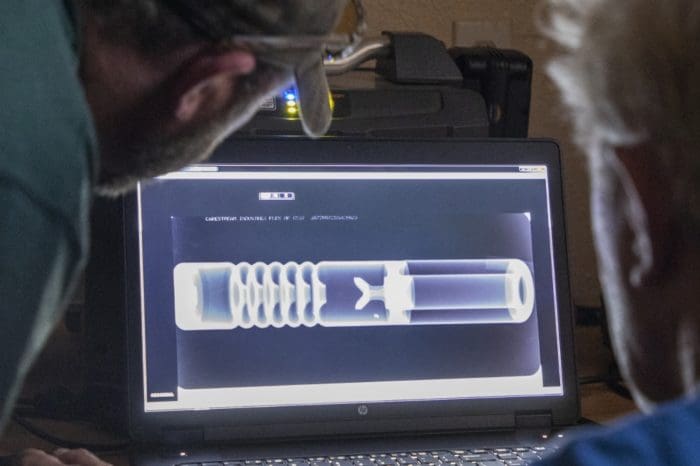
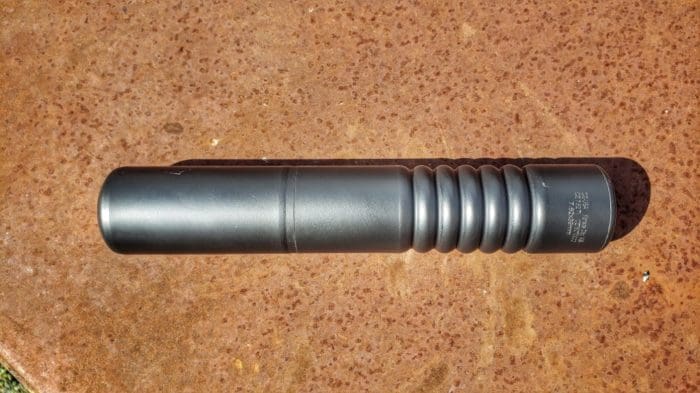
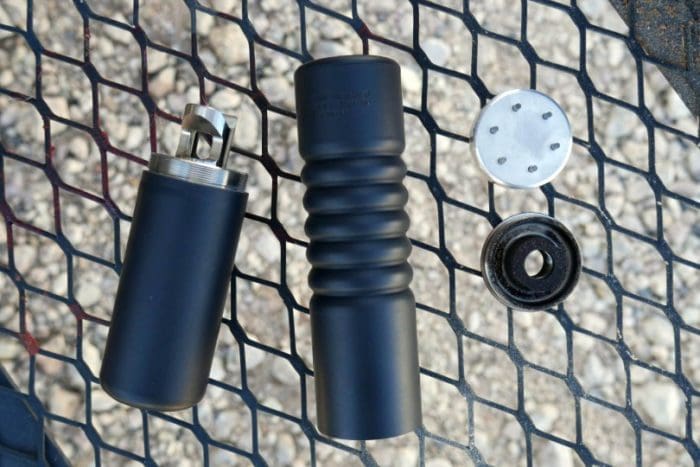
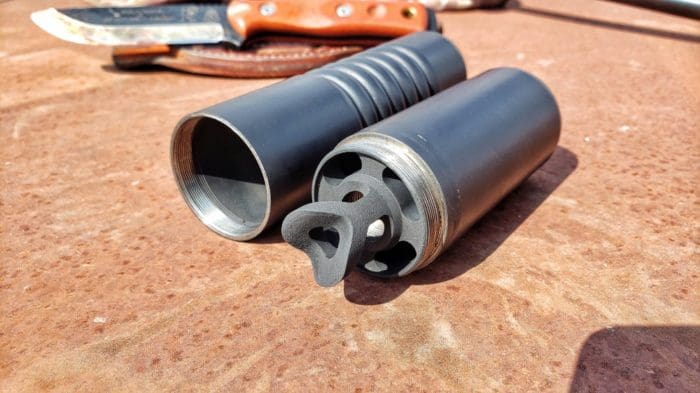
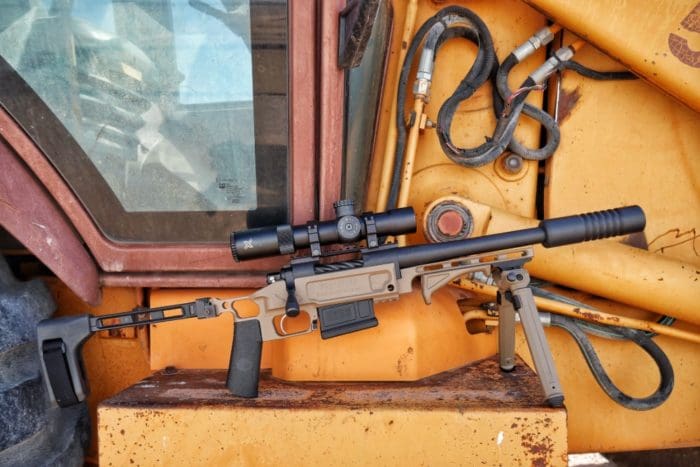

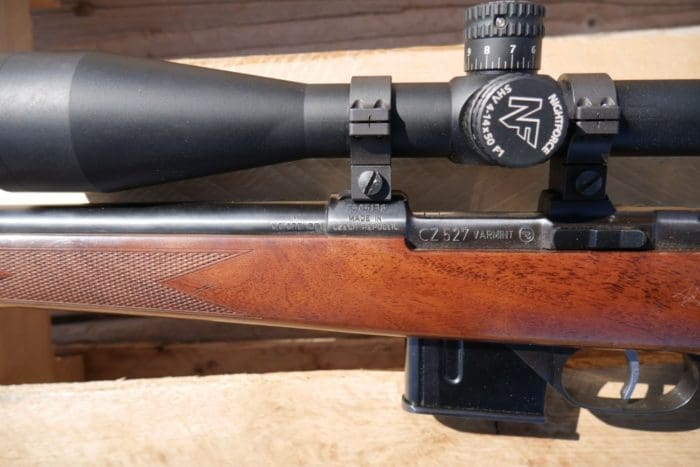
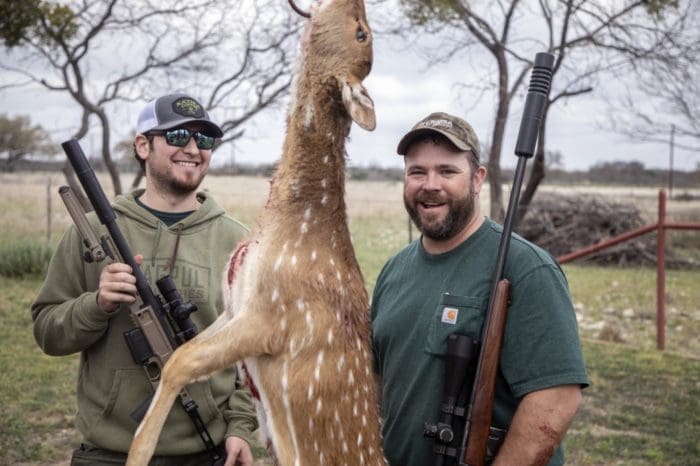
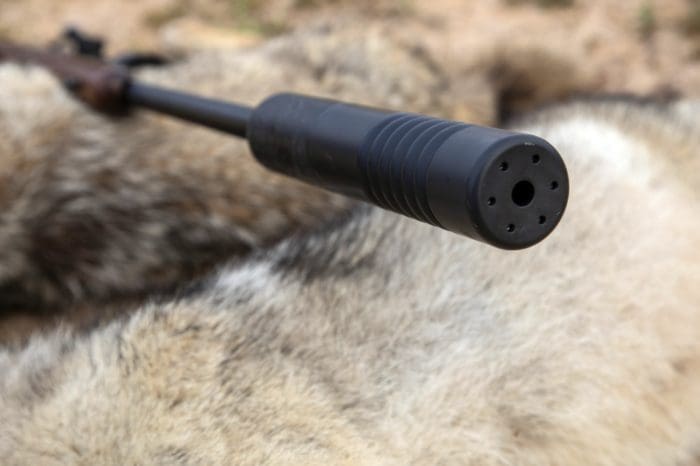
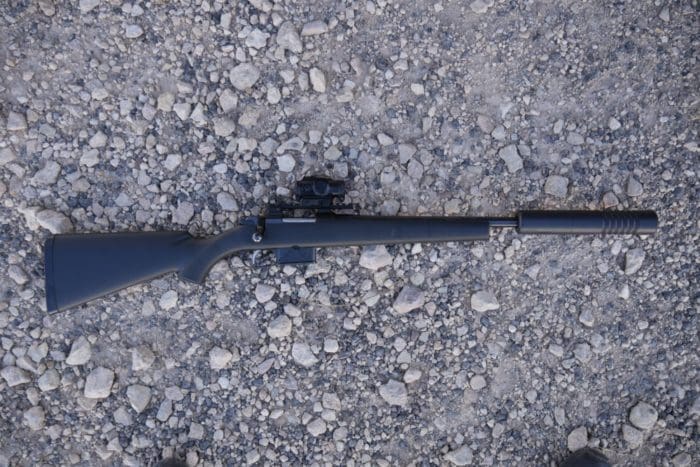
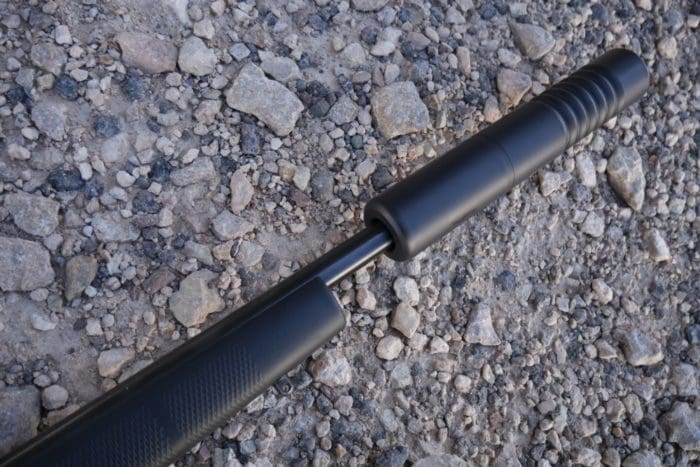

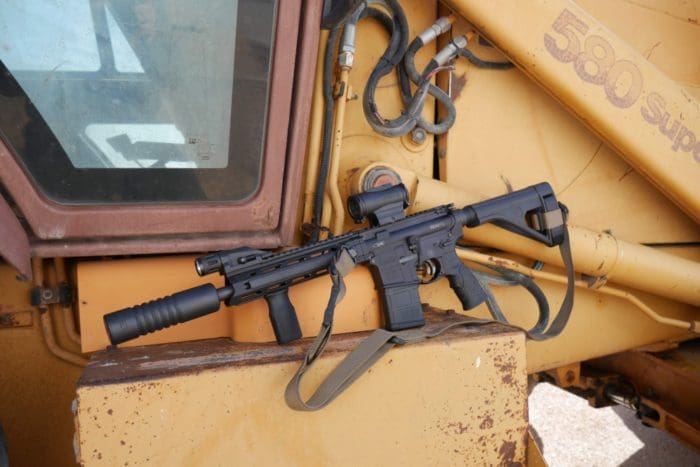
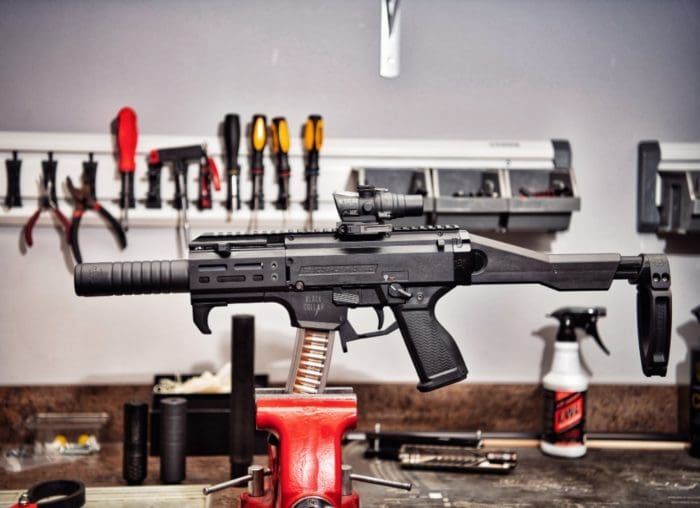


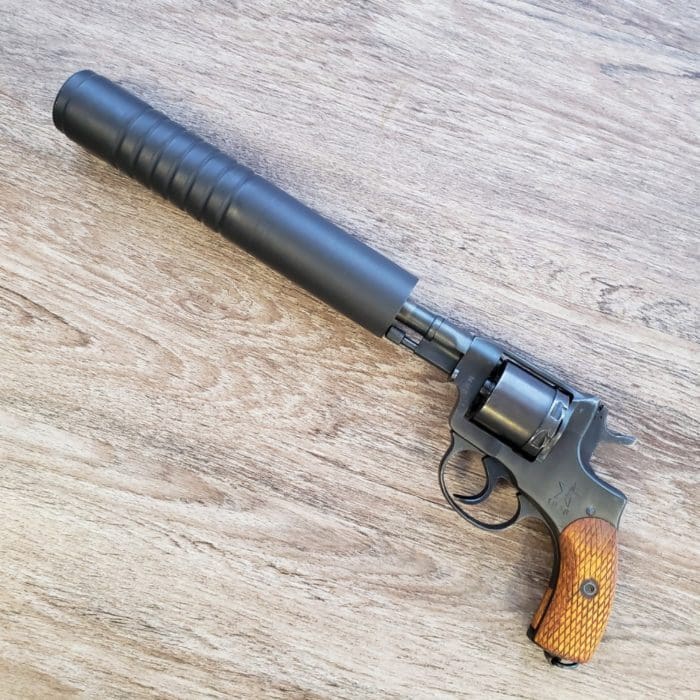
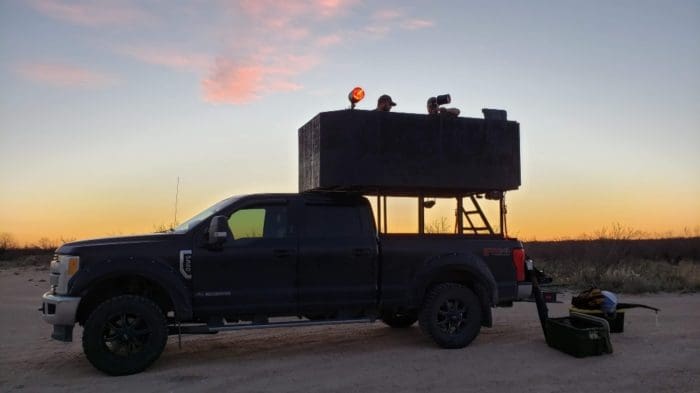
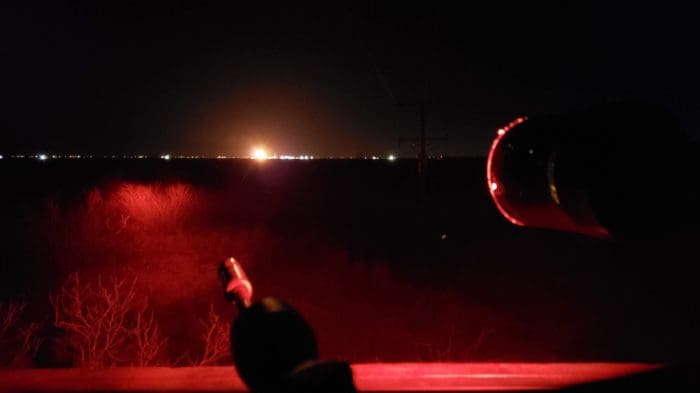


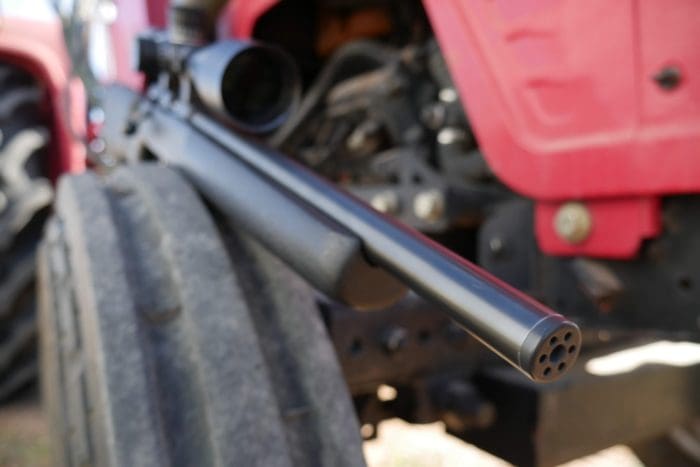
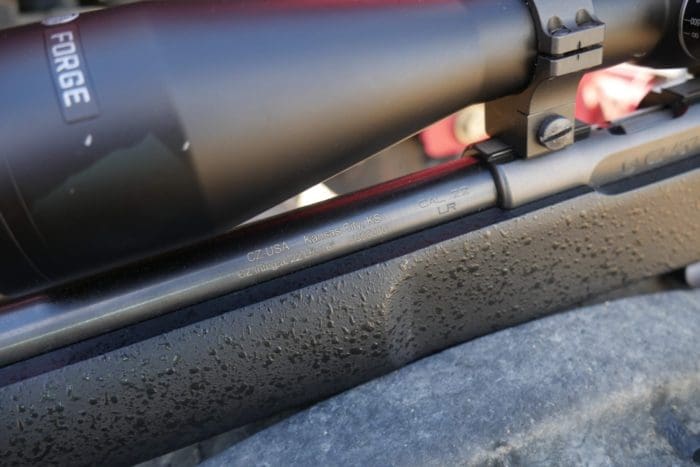

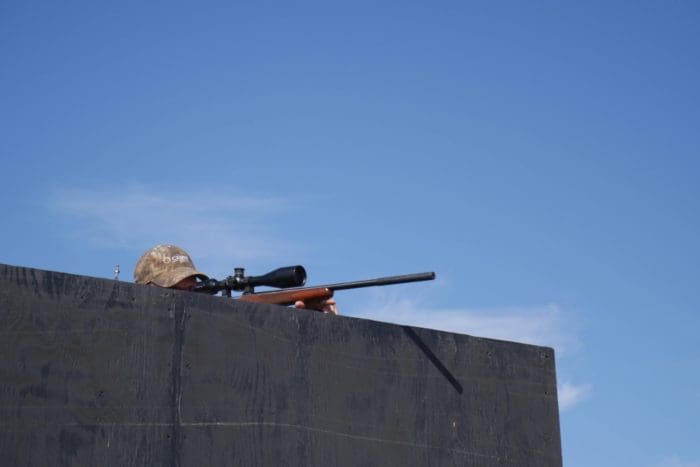

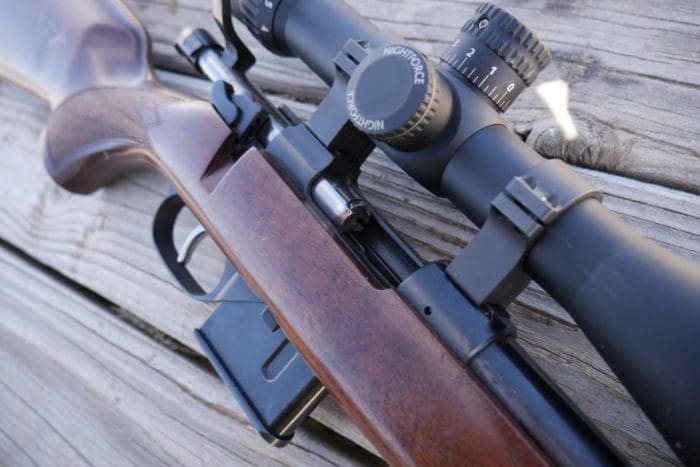

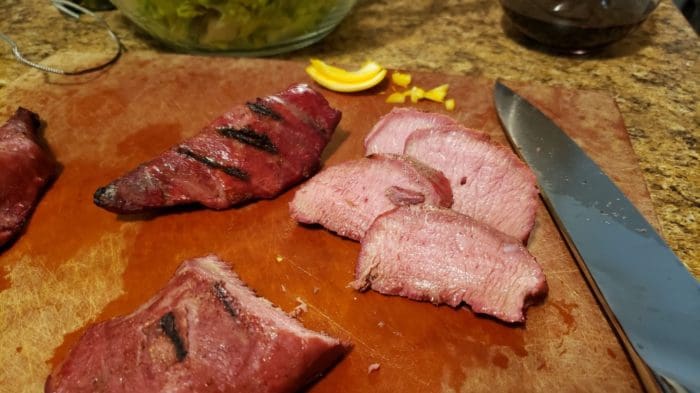
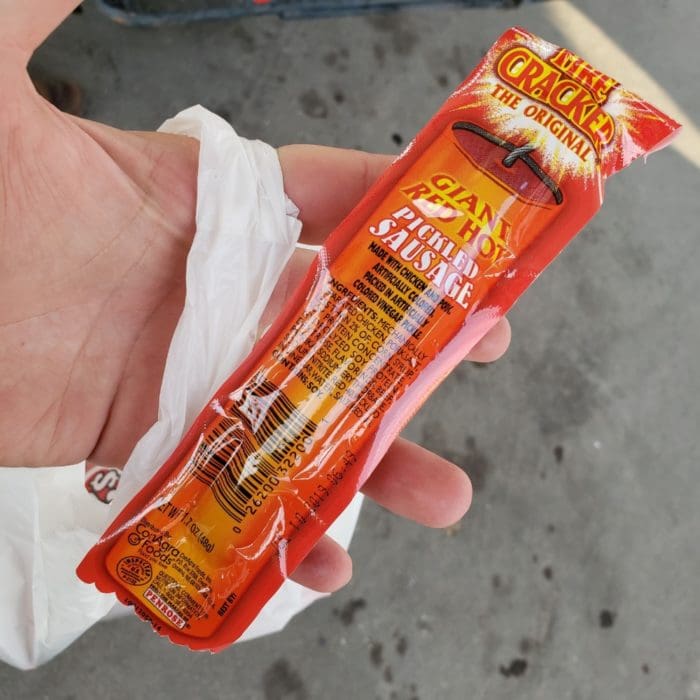

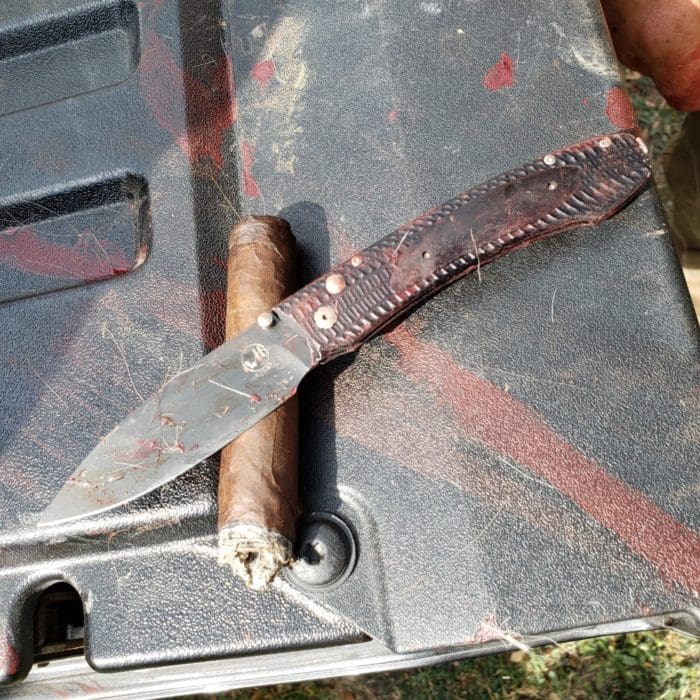


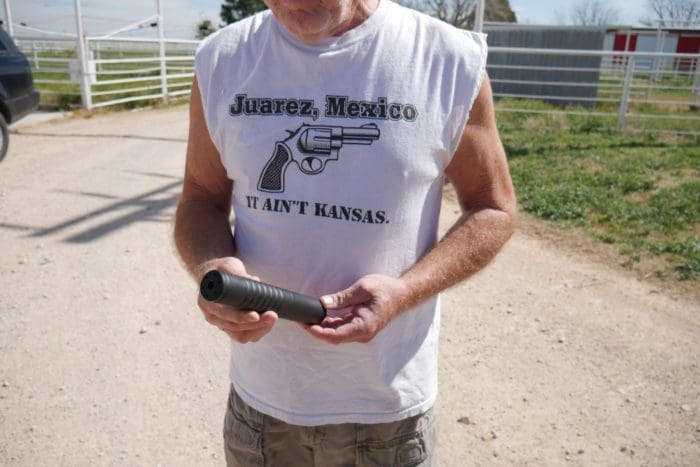
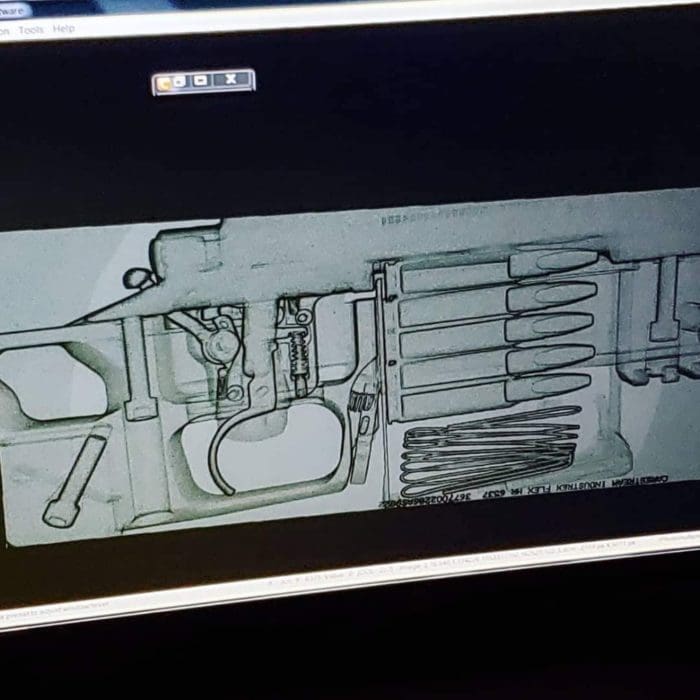

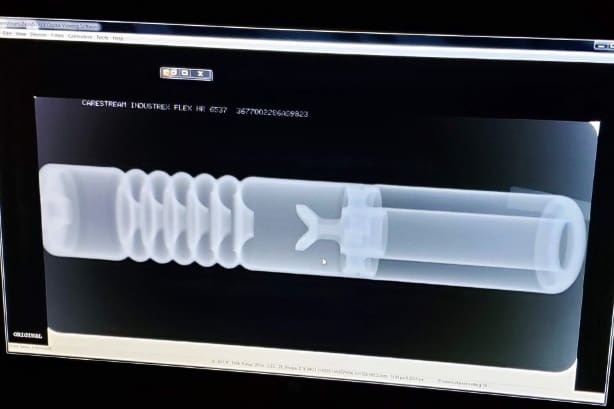

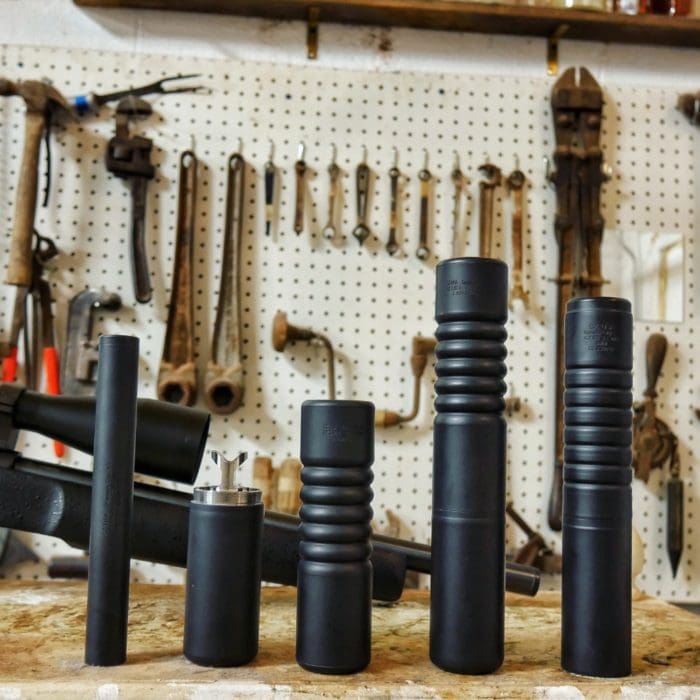



Hey, I know that knife!
And I’m dying to taste my first axis deer.
Cool to see ’em put to use, right?
How have you been doing? Maybe a visit to Texas this fall to go for axis is in order 🦌
One reason why I haven’t hunted for the past 20 years is due to my already damaged hearing. I have cans now, I plan on hunting this fall. I just hope the commies never get their way and ban the things. What a travesty that would be as suppressors are used so many more times for lawful purposes than unlawful purposes. The unlawful use where people are actually using them to commit a crime is almost zero. The people getting arrested for crimes for suppressors is mostly due to illegally possessing them without paying the tax to Uncle Sugar.
Axis deer looks delicious.
“Six-foot rattlesnakes aside, I don’t love fresh gouges in my cowboy boots…”
Real cowboy boots are work boots.
Cowboy boots with no scratches are a prime example of an “All, hat, no cattle” kind of guy.
There’s a *reason* they are known as “shit-kickers”. Do you even have a boot scraper by your front door? 🙂
(Anyways, nice write-up. There’s not much a DeWalt can’t do. I saw a 12v NiCad DeWalt in a late 1930s airplane cockpit pulling engine starter duty. He had a 3-foot long metal shaft with a pinyon gear welded on the end to engage the prop gear right behind the prop to crank the engine over. After the motor fires up, he pulled the DeWalt back by about 4 inches and rested the drill’s battery in a depression he fabricated. Real slick, it turned a hand-propped airplane into an electric start one, with zero permanent changes to a 70 year-old vintage airplane…)
Is there a reason not to get a good .223/5.56 can and also use it on a rimfire, if you have rifles in both calibers and wish to save some money?
I have a few CZ products, am very happy with them.
Two reasons; one an annoyance, and one a hard-stop.
Cans built for center fire rifle rounds are generally much heavier, larger and more expensive than ones designed for rimfire, so you would end up with a big heavy can on the end of your small/light pistol or rifle.
Second, most centerfire rifle cans are not user serviceable. Rimfires are very dirty, and a rimfire can needs to be disassembled and cleaned every 500-1000 rounds or so. A 223 can would fill up in relatively short order, with no efficient way to get the lead and carbon out.
Does anyone else make a no maintenance pistol caliber can? My understanding is that the high heat and low residue make it fine for rifle calibers, but pistol needs cleaning.
Cleaning the S2 is easy: put it on an AR and dump a mag of .223/5.56 through it. Done. The heat and pressure of that will burn off and clean out any gunk left behind from the 9mm. But 9mm is still way way way cleaner than rimfire and, yes, there are other fully welded 9mm cans out there. If you never cleaned one you could probably go 10,000 rounds before it started to get loud due to gunk buildup. You could clean it out with “the dip.”
Did I miss it or is there is no price info on these suppressors?
Yeah I didn’t slip all of the prices into the article. I did link to them all on CZ-USA’s website, though, and full stats and MSRP info and more is there.
CZ Suppressors: Ribbed for your pleasure.
Did you cut that Nagant 1895 barrel down? I was deciding if I should thread it at the current length or cut it and thread it, you dont have any issues with the bullets stabilizing? Obviously only 1 would cause a baffle strike so I was trying to make sure that wouldn’t happen